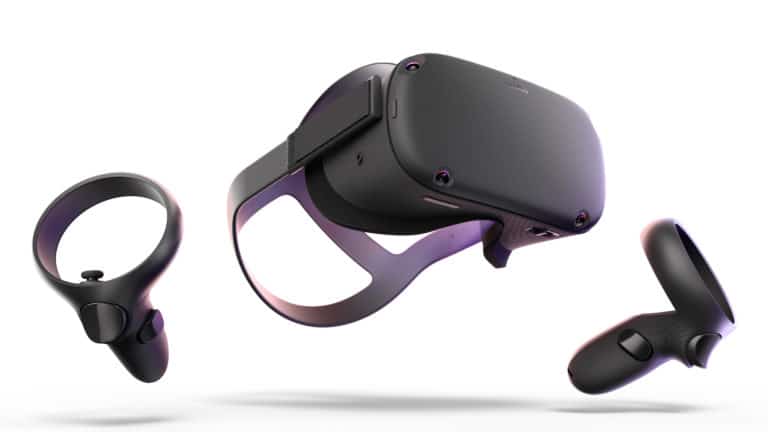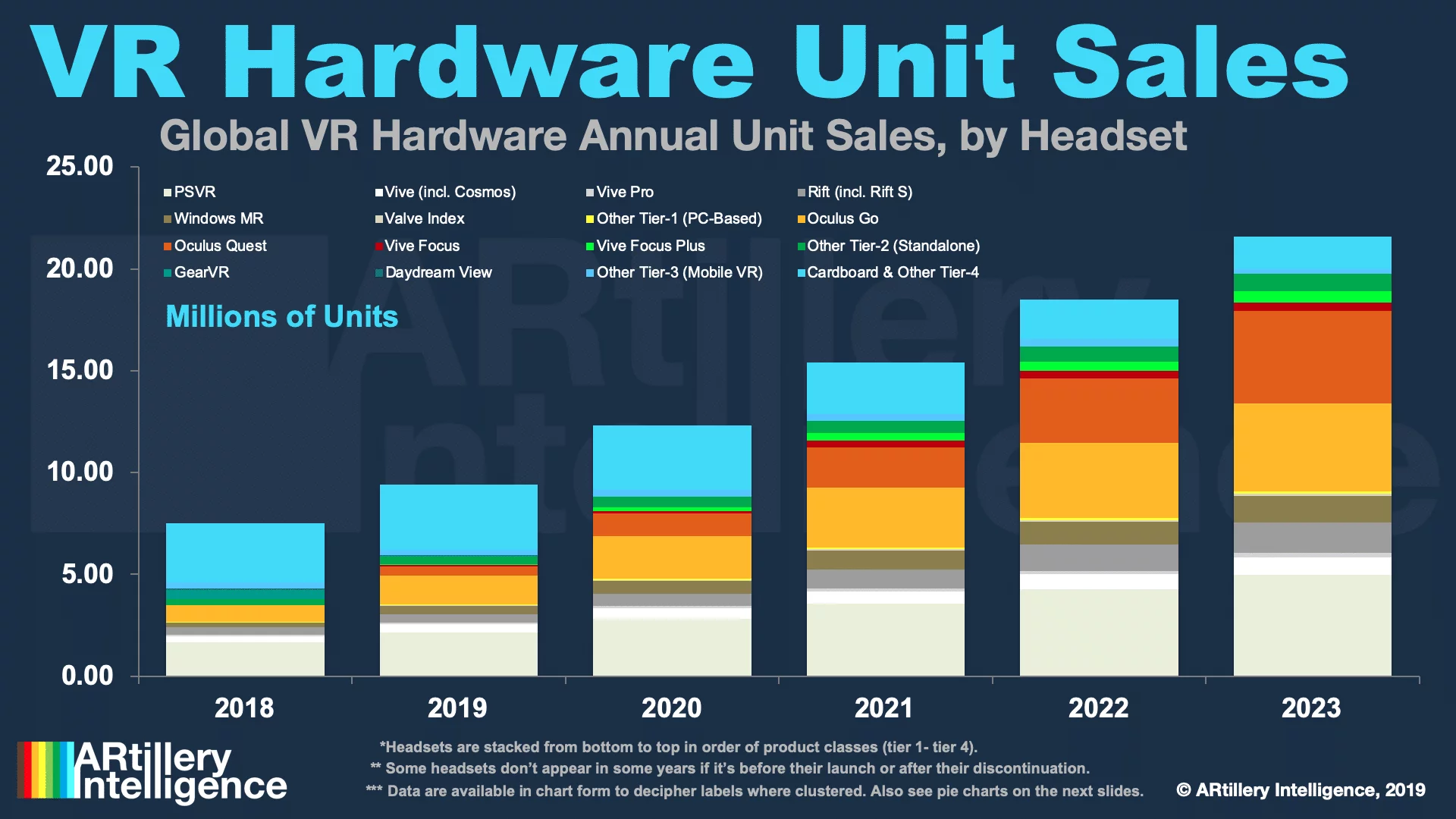
Data Point of the Week is AR Insider’s dive into the latest spatial computing figures. It includes data points, along with narrative insights and takeaways. For an indexed collection of data and reports, subscribe to ARtillery Pro.
Clues continue to roll in for Oculus Quest sales levels. These come straight from the source in Facebook public disclosures. Though they don’t specify actual dollars or unit sales, the things they do offer can help extrapolate those figures, as we recently did with its 2019 10K filing.
The latest such inputs come from Oculus comments in the recent kickoff for its Game Developers Showcase. There, it mentioned that 90 percent of Quest game purchases on Christmas day were from new VR users. Our ears perked up, as this breathes new life into our recent calculations.
This is based on Oculus’ announcement that it sold $5 million in content/games on Christmas day. From our analysis last month:
[With] Oculus content volume disclosures, we can extrapolate and back into hardware estimates. In this case, $5 million in content sales on Christmas day can mean a few things. Some portion of that spend is from new (gifted) Quest owners that want to get playing.
Some of that total is also existing Quest and Rift owners who were gifted or bought a game. […] Let’s say for the sake of this exercise that half of game purchases are for new Quest owners.
Let’s also conservatively estimate for the sake of this exercise that new Quest owners buying content on Christmas day averaged 1.5 game purchases. That would mean half bought one game and half bought two games, with room for zero and 3-game outliers. We’d get this:
(($5,000,000*.5)/($25*1.5)) = 67,000 new Quest units
Of course, this is based on some assumed inputs. But the model is there to play with. Let’s bump up the share of game purchasers that were brand new Quest owners to 60 percent. And let’s estimate the average games per-user at 2. In that scenario, we’d get this:
(($5,000,000*.6)/($25*2)) = 60,000 units. And so on…
Shedding New Light
Given new data that 90 percent of Christmas Day game sales were from new users, we can adjust the inputs to estimate holiday hardware sales with greater confidence. Specifically, the new inputs tell us that Oculus Quests bought or gifted for Christmas are between 90,000 and 120,000.
With 1.5 Christmas-day game purchases per-user on average
(($5,000,000*.9)/($25*1.5)) = 120,000 Quest units gifted for Christmas
With 2 Christmas-day game purchases per-user on average
(($5,000,000*.9)/($25*2)) = 90,000 new Quest units gifted for Christmas
Of course, that’s just Quest units associated with Christmas-season gift buying (Mid-November-on). For broader holiday sales, we have to factor in non-Christmas holidays including Hanukkah. That would make Quest holiday sales greater by a multiple that correlates to population segments.
Panning back, what about 2019 full-year sales? Starting with our September estimate of 333,000, a run rate of 83,333 monthly units would apply to October and half of November. Remaining sales would be counted by the above 90K-120k, plus sales attributed to non-Christmas holidays.
That gets us into the mid-500,000’s — close to the 470,000 units projected by our research arm ARtillery Intelligence in its Global VR revenue forecast. The latter is informed by thought exercises like the above, along with several other inputs in the firm’s market-sizing methodology.
Another point of validation comes from our exercise last week that examined Quest’s likely segment of the $1.042 billion Facebook reported in its 10K for “Payments and Other Fees” (where it reports VR revenues). That exercise yielded an estimate of 424,242 Quest units sold in 2019.

Thought Excercise
We’ll qualify the Quest holiday sales estimates with the caveat it’s a thought exercise, not an official Oculus figure. It’s also not an official figure from AR Insider nor its research arm ARtillery Intelligence. It’s about extrapolating ranges for a better sense of VR market levels.
As background, market sizing is sometimes like a Sudoku board. It’s about logically devising unknown quantities using known ones. Along with primary research and insider discussions, things like hardware sales can be extrapolated using known quantities like software sales, as above.
It’s also about coming at the figures from several angles. One of the most validating things in any calculations is to perform different methodologies in isolation (it works even better with multiple double-blind participants) that end up with the same or similar results, as above.
We’ll continue pulling together inputs — some harder to find than others — and reporting back what we find. Tracking these clues is important, not just to help buttress the market-sizing of our research arm, but to impart an ongoing sense of VR traction and its strategic implications.
For deeper XR data and intelligence, join ARtillery PRO and subscribe to the free AR Insider Weekly newsletter.
Disclosure: AR Insider has no financial stake in the companies mentioned in this post, nor received payment for its production. Disclosure and ethics policy can be seen here.
